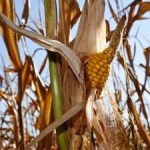 Corvallis, Oregon – Climate change, habitat destruction, pollution and invasive species are all involved in the global crisis of amphibian declines and extinctions, researchers suggest in a new analysis, but increasingly these forces are causing actual mortality in the form of infectious disease.
Corvallis, Oregon – Climate change, habitat destruction, pollution and invasive species are all involved in the global crisis of amphibian declines and extinctions, researchers suggest in a new analysis, but increasingly these forces are causing actual mortality in the form of infectious disease.
Amphibians are now, and always have been hosts for a wide range of infectious organisms, including viruses, bacteria and fungi, scientists said in a review published in Philosophical Transactions of the Royal Society B.
But in recent decades, disease seems to have taken a more prominent role in causing mortality. Because of multiple stresses, many induced by humans, amphibians now succumb to diseases they may historically have been better able to resist or tolerate.
“There’s more and more evidence of the role of disease in the biodiversity crisis, in both amphibians and other types of animals,” said Andrew Blaustein, a distinguished professor of zoology at Oregon State University and author of the recent analysis.
“It’s normal for animals to deal with infectious organisms, often many of them simultaneously,” he said. “But in the face of pollution, a reduced immune response, climate change, evolving pathogens and many other stresses in such a short period of time, many species now simply can’t survive.”
The current extinction rates of amphibians – which existed even before dinosaurs roamed the Earth – may be more than 200 times the background rate of extinction, the scientists note in this report. From an evolutionary perspective, amphibians that survived for hundreds of millions of years may be undergoing a major extinction event.
Because they have both terrestrial and aquatic life stages amphibians are exposed to various environmental forces more than some other animals, scientists say, and a higher percentage of them are threatened with extinction than are birds or mammals. However, similar concerns may become apparent in many animal species, including humans, as environmental changes and stresses grow, they said.
Among the observations in this report:
- Infectious disease around the world is increasing at an unprecedented rate.
- Natural stresses such as competition and predation have been joined by human-induced stresses, ranging from pollution to global warming.
- These forces can reduce immune competence in amphibians, even as climate change, invasive species and other factors increase pathogen spread, persistence, growth and mortality.
- Some amphibians deal with stress by hormonal changes such as increased production of glucocorticoids, but on a sustained basis, that approach can further suppress their immune system.
- Warmer winters and night-time temperatures may reduce the cycle of pathogen die-offs that would naturally occur in colder regions.
These forces are complex, the researchers noted. The effects of climate change on amphibian disease, for instance, my cause some pathogens to increase in prevalence and severity, while others decline.
Understanding the driving forces behind these changes, the scientists said, will be important not only to address amphibian declines but also to deal with emerging infections in many other plants and animals, including humans. Such impacts can affect wildlife conservation, economic growth and human health.
Source: Oregon State University.














